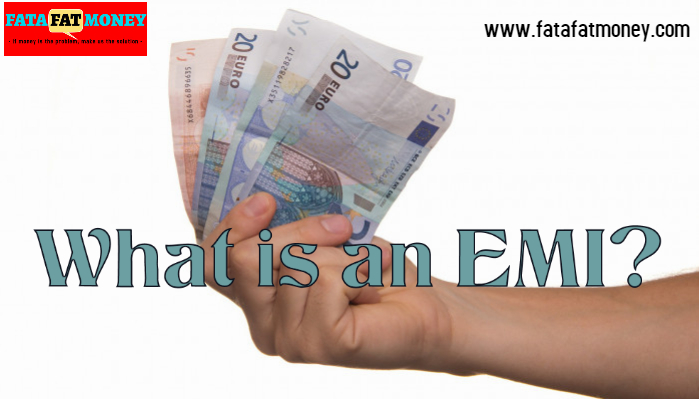What is an EMI?
An EMI Equated Monthly Installment is a monetary term utilized in loan repayments. It is a fast and simple technique to repay any kind of loan.
When a borrower takes a loan from a financial institution, the repayment of the loan is completed primarily in particular monthly instalments.
These fixed monetary instalments are generally known as EMIs. The amount of EMI depends on the principal loan amount, tenure and the rate of interest.
This monthly instalment or EMI amount is meant to be paid on a fixed date to the financial institution by cheque or by electronically.
All through the loan tenure, the EMI amount changes or remains the same?
- The changing of EMI amount depends upon what choices the borrower makes while opting a selected EMI plan and paying it.
- Floating Interest Rate: If the borrower opts for a floating rate of interest, the amount of EMI will change each time a new floating rate is set by the lender. However, the borrower can ask the lender to change the tenure of the loan as an alternative to the amount of EMI.
- Prepaying the Loan Amount: If the borrower pre-pays the loan within the given tenure, the EMI amount changes. Prepaying the loan reduces the principal amount on the loan and the rate of interest changes based on the remaining principal. Right here too, the borrower can ask the lender to change the tenure of the loan as an alternative of the amount of EMI.
- Choosing Progressive EMIs: Many occasions the borrowers are unable to pay the EMI amount in huge sums so, that they go for this feature. Right here many lenders offer to repay the loan in smaller EMIs initially of loan repayment tenure. This can be a fixed period.
- After that, the borrower pays the debt in larger EMIs.
How the EMI is calculated?

EMI of any loan is set by inspecting three factors:
- The Principal Loan Amount: The principal loan amount refers back to the amount the borrower can be getting from the banks as a loan. That is the basic criteria to decide the EMI. Because the principal amount increases, the EMI will increase too.
- The Rate of Interest: The rate of interest is set by the lender which will be applicable on the borrowed sum or principal amount. The rate of interest is set on the basis of borrower’s earnings, credit score historical past, repayment capability and many others. It differs from financial institution to financial institution.
- The financial institution provides borrowers’ two kinds of rates of interest: floating and fixed. The amount of EMI changes as per the kind of rate of interest chosen by the borrower.
- The Tenure: Tenure refers to the time period by which the borrower is meant to repay the loan with a rate of interest. The tenure changes as per the loan type, borrower’s credit score historical past and other eligibility details. The increase or decrease in tenure means the increase or decrease within the time period to repay the loan.
What are the other fees a loan borrower has to pay by opting EMI?
- The rate of interest: The borrower has to pay an additional amount than the actual borrowed amount in the form of the rate of interest. Because the principal amount and rates of interest are combined for an EMI, the borrower cannot avoid paying this extra amount.
- Late charges: If the borrower by any chance misses or forgets to pay an instalment or EMI the lender charges the borrower with late fees. The amount differs from financial institution to financial institution however is taken by everyone. It’s also bad for borrower’s credit score rating.
Is EMI good for loan repayment?
EMI is the best choice to pay any debt. It’s simple, hassle-free and does not constrain borrower’s finance plan. As many banks nowadays provide flexible EMI terms, repaying loans has never been simpler.
Check Your EMI By personal loan EMI calculator, home loan EMI calculator, Car loan EMI calculator and get a quick personal loan through Fatafatmoney.com

Fatafatmoney.com:- Secure Your Ambitions with Unsecured Personal Loan
[…] doesn’t come simple. You have to pay a higher rate of interest and consequently higher monthly instalments (EMI). Moreover, your financial standing, credit score historical past and current outstanding money owed […]